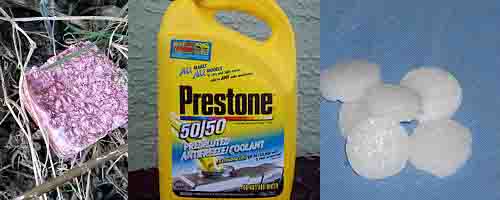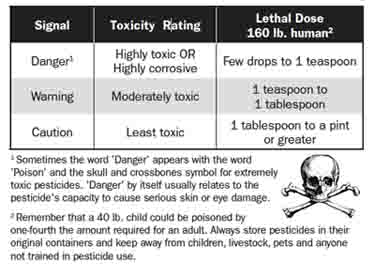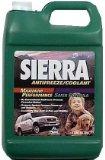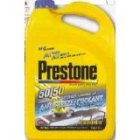Table of Contents
Dog Poisoning Symptoms | What to Do If Your Dog Eats Poison | Antifreeze | Cleaning Products | Flea and Tick | Foods | Insecticides | Lead | Medications | Mothballs | Plants | Rodenticides | Slug and Snail Poisons | Zinc
Summary:
There are over 200,000 cases of dog poisoning a year. Common dog toxins found in the home include:
- Human Medications (Prescription and Over the Counter, Supplements)
- Foods such as Chocolate, Alcohol, Avocado, Grapes, Raisins, Macadamia Nuts, and Xylitol
- Use of Dewormers and other preventatives that exceed recommended levels
- Household cleaners
- Rodenticides
- Insecticides
- Plants
- Lawn and Garden Products
If you believe your dog has ingested a a substance that is poisonous to dogs, call a poison control hotline such as the one offered by the ASPCA right away (888) 426-4435 ($65 charge) or the Animal Poison Control Center (800) 548-2423. If you have the package for the product, check the label for instructions. Do not induce vomiting unless suggested by a veterinary or hotline professional. Act fast to avoid causing permanent harm. If you see your dog suffering from seizures, is fading or losing consciousness or is having breathing difficulties, bring your dog directly to an emergency veterinary clinic. Chemical poisoning can be lethal, so always act on the side of caution and call a veterinarian immediately.

Dog Poisoning Symptoms
Chemicals that are toxic to dogs can cause mild to severe symptoms. Mild symptoms related to chemical exposure include:
- lethargic behavior
- poor appetite
More chronic symptoms include:
- salivation
- drooling
- decline in coordination
- tremors
- convulsions
- death
See below for symptoms associated with specific chemicals that are toxic to dogs.
What To Do If Your Dog Eats a Poison
If you know what your dog ingested, check the label. Look for words such as danger or poison. Assume that product toxic to humans with also be toxic to dogs.
What the Chemical Label Words Mean:

Prevention
Pesticide product labels are a good place to start when determining how to avoid poisoning from products such as lawn insecticides. The REI (restricted entry interval) lists how long you should wait before a dog should be allowed on the lawn. This includes the removal of any dog toes or other items that come in contact with your pet prior to treating lawn or plant areas.
Dog Food Poisoning
Alcohol
This poisoning can come from small amounts of alcoholic beverages like beer, vanilla extract, and raw bread dough. Alcohol poisoning can cause bloat and intestinal rupture.
Symptoms are; swollen stomach, seizures, vomiting, diarrhea, disorientation, coma and death.
Avocado
All parts of the avocado are very poisonous to dogs. Avocado will destroy the heart muscle and lungs.
Signs of poisoning are; swollen abdomen, difficulty breathing, seizures, coma and death.
Chocolate Poisoning
Chocolate cannot be metabolized by dogs. It contains Theobromine which a chemical similar to caffeine. Candy bars, M&M’s or just a small square of baker’s chocolate can be fatal to dogs of any size.
The signs of Chocolate poisoning are; vomiting, diarrhea, hyperactivity, seizures, muscle tremors, cardiac arrest and death.
Grapes and Raisins
It does not take many grapes or raisins to be fatal to most dogs.
Symptoms are vomiting, diarrhea, bloody or foamy urine, irregular heartbeat or breathing, kidney failure and death.
Onions and Garlic
A dog’s digestive system cannot digest onions and garlic. The chemical thiosulphate causes red blood cells to rupture resulting in anemia. Small amounts can be very serious.
Symptoms of this poisoning include; difficulty breathing, weakness, vomiting, jaundice and irregular heartbeat.
Xylitol
Xylitol is an artificial sweetener that is found in many cakes, cookies, sugarless candy and gum.
Symptoms of this poisoning are; fatigue, staggering, irregular heartbeat or breathing, seizures, coma and death.
Insecticides, Household and Automotive Chemicals
General symptoms of pesticide poisoning are:
- Pale gums
- Internal bleeding (blood in urine/stool)
- Fatigue
- Nosebleeds
- Excessive thirst and drooling
- Heavy breathing
- Muscles tremors
Ant, Flea and Cricket Insecticide
The insecticide Bendiocarb kills ants, crickets and fleas. Manufacturers are currently reducing or phasing it out. It causes excessive salvation, chest discomfort and muscle tremors. The insecticide Avermectin B1, used to kill fire ants, is toxic to dogs. Related symptoms are tremors and lethargy.
Fly and Mosquito Insecticide
The insecticide Allethrin is used to kill mosquitoes and flies. It is toxic to dogs and has been associated with dog liver cancer.
Lawn Insecticides
Organophosphates when used in lawn insecticides can be dangerous to dogs and could cause tremors and seizures. According to the ASPCA, this represents approximately 20% of calls to their poison hot line.
A University of Colorado study indicated that higher levels of the insecticide 2,4 D were found in dogs that lived near treated lawns. A study published in 1995 in Environmental Research Journal shows a “statistically significant” increase in the risk of canine malignant lymphoma in dogs exposed to herbicides, particularly 2,4-D, commonly used on lawns and in “weed and feed” products.
Insecticides that use orthophosphates (Malation, dichlorvos) and those that use carbamates (Carbaryl, Aldicarb, Diazinon, Methiocarb) are shown to inhibit cholinesterase in a Harvard Study. This has been shown to cause aggressive behavior in dogs. A Purdue University studies demonstrated that gardens and lawns treated with pesticide have a higher incidence of transitional cell carcinoma of the bladder (bladder cancer).
The insecticide Rotenone can cause weight loss and vomiting.
For Additional Reading
For additional reading about dog poisoning and insecticides:
Dog Antifreeze Poisoning
Will Antifreeze Kill a Dog?
Ethylene glycol (antifreeze) is one of the most dangerous things your dog could ingest. Dogs are attracted to its sweet smell and taste. A tablespoon of antifreeze could kill (approximately 5) or it can cause severe symptoms in a small dog. Antifreeze dog poison treatment within hours of ingesting the poison includes induced vomiting to empty the stomach. Charcoal is giving to the dog to absorb antifreeze that is in the intestines. A medication is used which can prevent the dog's liver from converting the antifreeze into toxins that can harm the dog. Similar steps are taken for white spirit or barbecue light fluid poisoning.
If dog kidney failure has already started, treatment is still possible with more aggressive approaches such as canine kidney dialysis. Dialysis can remove toxins which can give the dog's kidney an opportunity to repair themselves. A dog kidney transplant can also be used in chronic cases.
The prognosis for dogs treated within 12 hours after ingesting anti-freeze is good. The prognosis is grave after 24 hours.
Dog Antifreeze Ingestion Symptoms
Antifreeze Dog Poison Symptoms:
- seizures
- staggering
- depression
- increased water consumption
- increase in urination, with less urine each time
- vomiting
Treatment: Take Immediate Action if your Dog Ingests Antifreeze
- CALL - If you suspect dog antifreeze poisoning call an emergency veterinary clinic, your veterinarian or if you can't reach someone immediately call the ASPCA 24 hour poison hot line at (888) 426-4435.
- INDUCE VOMITING - Vomiting will get as much antifreeze out of your dogs system as possible.
- RACE TO VET - your vet will give your dog 4-methylpyrazole or ethanol to keep the antifreeze from breaking down into toxins.
Antifreeze dog poison problems can be avoided by picking up the poison from leaking cars and by storing the product in sealed containers. Better yet, buy a pet safe antifreeze made from propylene glycol such as the Sierra shown below. Antifreeze that contains propylene glycol such as the brand Sierra are not as harmful as antifreeze that doesn't contain this ingredient. While it will still make your dog sick such as stomach upset or problems with the nervous system, it shouldn't cause the kidney damage. Even with this brand, contact your veterinarian immediately.
Antifreeze dog poison problems can be avoided by picking up the poison from leaking cars and by storing the product in sealed containers. Better yet, buy a pet safe antifreeze made from propylene glycol such as the Sierra.
Dog Antifreeze Poisoning Prevention |
|
|---|---|
|
Don't Use This |
Use this |
|
|
 |

